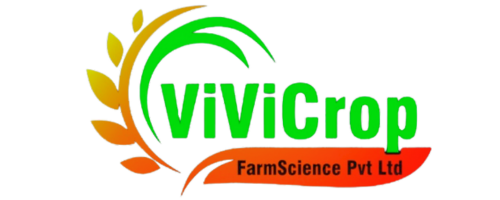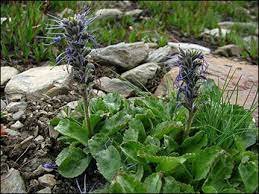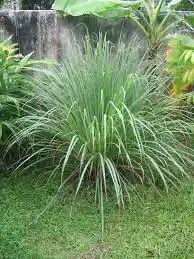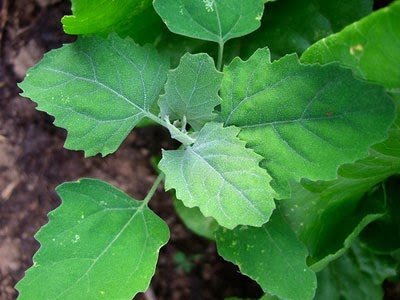Masoor Dal Nutrition Requirements
Nutrition required by Masoor Dal at each stage of its life cycle.
SOIL PREPARATION

Soil Preparation
Soil preparation is a crucial step in preparing the land for red lentil cultivation. Here's a method for soil preparation and the nutrition requirements at the soil preparation stage for red lentils:
1. **Soil Preparation Method**:
a. **Site Selection**:
- Choose a well-drained site with loamy or sandy loam soil for optimal red lentil growth.
- Ensure adequate sunlight exposure, as red lentils thrive in full sun.
b. **Land Clearing**:
- Clear the land of any weeds, debris, or previous crop residues to ensure a clean planting bed.
- Remove any large rocks, stones, or other obstacles that may hinder planting or soil preparation.
c. **Soil Testing**:
- Conduct a soil test to assess nutrient levels, pH, and soil texture.
- Amend the soil based on the soil test results to ensure optimal nutrient levels for red lentil growth.
d. **Tillage**:
- Till the soil to a depth of 6 to 8 inches using a plow or disk harrow to break up soil clumps and improve soil structure.
- Incorporate organic matter such as compost or well-rotted manure into the soil to improve soil fertility and water retention.
e. **Leveling and Bed Preparation**:
- Level the soil surface using a land leveler or harrow to create a uniform planting bed.
- Form raised beds or ridges if necessary to improve drainage and prevent waterlogging, especially in heavy clay soils.
f. **Final Preparation**:
- Ensure that the soil is adequately moist but not waterlogged before planting.
- Smooth the soil surface with a rake to create a fine seedbed for planting red lentils.
2. **Nutrition Requirements at Soil Preparation Stage**:
- Red lentils have specific nutritional requirements during the soil preparation stage to ensure optimal growth and yield.
- Key nutrients required by red lentils at this stage include nitrogen (N), phosphorus (P), potassium (K), and micronutrients such as zinc (Zn) and iron (Fe).
- Incorporate balanced fertilizers or organic amendments based on soil test recommendations to provide adequate levels of essential nutrients.
- Phosphorus is particularly important for promoting root development and early plant growth, so ensure that the soil has sufficient phosphorus levels through proper fertilization.
- Organic matter amendments such as compost or well-rotted manure can improve soil fertility and provide additional nutrients to support red lentil growth.
- Ensure that soil pH is within the optimal range for red lentils, which is typically between 6.0 and 7.0, to maximize nutrient availability.
By following these soil preparation methods and addressing the nutrition requirements at the soil preparation stage, you can create favorable growing conditions for red lentils and promote healthy plant growth and development.
Early Growth (Germination to Establishment)

Early Growth
During the early growth stage (germination to establishment) of red lentils, proper nutrition is essential to support vigorous root development, early plant growth, and establishment.
Here are the key nutrient requirements for red lentils during this stage:
1. **Nitrogen (N)**:
- Nitrogen is crucial for promoting early vegetative growth and supporting the development of healthy leaves and stems.
- Adequate nitrogen availability during the early growth stage ensures robust plant establishment and enhances photosynthetic activity.
2. **Phosphorus (P)**:
- Phosphorus is essential for promoting strong root development and early plant growth.
- It plays a critical role in energy transfer processes, nucleic acid synthesis, and cell division during germination and early growth stages.
3. **Potassium (K)**:
- Potassium is important for overall plant vigor and stress tolerance, especially during the early growth stage when plants are establishing root systems.
- It aids in water uptake and nutrient transport, enhancing drought tolerance and promoting healthy plant growth.
4. **Micronutrients**:
- Micronutrients such as zinc (Zn), iron (Fe), manganese (Mn), and copper (Cu) are essential for various biochemical processes and enzyme activities in red lentil plants.
- Adequate levels of micronutrients are crucial for promoting healthy plant growth and preventing nutrient deficiencies that can impair early development.
5. **Sulfur (S)**:
- Sulfur is important for protein synthesis and overall plant development, including the formation of chlorophyll and enzymes.
- It contributes to the structural integrity of proteins and plays a role in nitrogen metabolism.
6. **Calcium (Ca)** and **Magnesium (Mg)**:
- Calcium and magnesium are essential secondary nutrients that play important roles in cell wall formation, enzyme activation, and photosynthesis.
- Adequate levels of calcium and magnesium promote strong cell structure and support early plant growth and development.
7. **pH and Soil Amendments**:
- Maintaining the soil pH within the optimal range (typically between 6.0 and 7.0) is crucial for nutrient availability and uptake by red lentil plants during the early growth stage.
- Soil amendments such as compost or well-rotted manure can provide organic matter and micronutrients, improving soil fertility and supporting early plant growth.
Ensuring that red lentil plants have access to adequate levels of these essential nutrients during the early growth stage is crucial for promoting healthy root development, vigorous vegetative growth, and successful establishment in the field. Soil testing and proper fertilization practices can help optimize nutrient availability and support optimal early growth in red lentils.
Tillering Stage (Shoot Development)

Tillering Stage
During the tillering stage (shoot development) of red lentils, the plant requires specific nutrients to support vegetative growth, shoot development, and the formation of reproductive structures.
Here are the key nutrient requirements for red lentils during this stage:
1. **Nitrogen (N)**:
- Nitrogen is essential for promoting vigorous vegetative growth and tiller development in red lentils during the tillering stage.
- Adequate nitrogen availability supports the production of chlorophyll, which is essential for photosynthesis and overall plant vigor.
2. **Phosphorus (P)**:
- Phosphorus plays a crucial role in promoting root development, nutrient uptake, and energy transfer processes during shoot development and tillering.
- Adequate phosphorus availability supports the formation of strong tillers and enhances plant vigor and biomass accumulation.
3. **Potassium (K)**:
- Potassium is important for regulating water uptake, nutrient transport, and osmotic balance in red lentil plants during the tillering stage.
- Adequate potassium levels support healthy shoot development, improve stress tolerance, and enhance overall plant vigor.
4. **Micronutrients**:
- Micronutrients such as zinc (Zn), iron (Fe), manganese (Mn), and copper (Cu) play essential roles in enzyme activities, photosynthesis, and overall plant metabolism during the tillering stage.
- Adequate levels of micronutrients support optimal shoot development, tiller formation, and nutrient utilization in red lentil plants.
5. **Sulfur (S)**:
- Sulfur is important for protein synthesis, enzyme activation, and overall plant metabolism during shoot development and tillering.
- Adequate sulfur availability supports the formation of amino acids and proteins essential for shoot growth and structural integrity.
6. **Calcium (Ca)** and **Magnesium (Mg)**:
- Calcium and magnesium are essential secondary nutrients that play important roles in cell wall formation, enzyme activation, and overall plant metabolism during shoot development and tillering.
- Adequate levels of calcium and magnesium support optimal shoot growth, tissue differentiation, and structural integrity in red lentil plants.
7. **pH and Soil Amendments**:
- Maintaining the soil pH within the optimal range (typically between 6.0 and 7.0) is crucial for nutrient availability and uptake by red lentil plants during the tillering stage.
- Soil amendments such as compost or well-rotted manure can provide organic matter and micronutrients, improving soil fertility and supporting optimal shoot development and tillering.
Ensuring that red lentil plants have access to adequate levels of these essential nutrients during the tillering stage is crucial for promoting healthy shoot development, vigorous tiller formation, and optimal growth in the field. Soil testing and proper fertilization practices can help optimize nutrient availability and support optimal tillering in red lentils.
Flowering

Flowering
During the flowering stage, red lentils have specific nutritional requirements to support optimal flower development, pollination, and seed formation.
Here are the key nutrient requirements for red lentils during the flowering stage:
1. **Nitrogen (N)**:
- Nitrogen is essential for promoting healthy flower development and enhancing pollen production in red lentils during the flowering stage.
- Adequate nitrogen availability supports the formation of amino acids and proteins necessary for flower structure and function.
2. **Phosphorus (P)**:
- Phosphorus plays a crucial role in promoting flower initiation, pollination, and seed formation during the flowering stage of red lentils.
- Adequate phosphorus availability supports the transfer of energy, nucleic acid synthesis, and cell division processes essential for flower development and reproduction.
3. **Potassium (K)**:
- Potassium is important for regulating water uptake, nutrient transport, and osmotic balance in red lentil plants during the flowering stage.
- Adequate potassium levels support optimal flower development, pollen viability, and seed set in red lentils.
4. **Calcium (Ca)** and **Magnesium (Mg)**:
- Calcium and magnesium are essential secondary nutrients that play important roles in cell wall formation, enzyme activation, and overall plant metabolism during the flowering stage.
- Adequate levels of calcium and magnesium support optimal flower development, pollen tube elongation, and seed formation in red lentil plants.
5. **Sulfur (S)**:
- Sulfur is important for protein synthesis, enzyme activation, and overall plant metabolism during the flowering stage of red lentils.
- Adequate sulfur availability supports the formation of amino acids and proteins necessary for flower structure and function.
6. **Micronutrients**:
- Micronutrients such as zinc (Zn), iron (Fe), manganese (Mn), and copper (Cu) play essential roles in enzyme activities, photosynthesis, and overall plant metabolism during the flowering stage.
- Adequate levels of micronutrients support optimal flower development, pollen germination, and seed set in red lentil plants.
7. **pH and Soil Amendments**:
- Maintaining the soil pH within the optimal range (typically between 6.0 and 7.0) is crucial for nutrient availability and uptake by red lentil plants during the flowering stage.
- Soil amendments such as compost or well-rotted manure can provide organic matter and micronutrients, improving soil fertility and supporting optimal flower development and seed formation.
Ensuring that red lentil plants have access to adequate levels of these essential nutrients during the flowering stage is crucial for promoting healthy flower development, successful pollination, and optimal seed set. Soil testing and proper fertilization practices can help optimize nutrient availability and support optimal flowering in red lentils.
Matchuration & Ripening

Matchuration & Ripening
During the maturation and ripening stage of red lentils, the plant's nutritional requirements shift to support seed development, maturation, and final grain filling.
Here are the key nutrient requirements for red lentils during the maturation and ripening stage:
1. **Phosphorus (P)**:
- Phosphorus is crucial for supporting seed development, maturation, and overall grain filling during the maturation and ripening stage of red lentils.
- Adequate phosphorus availability supports the transfer of energy, nucleic acid synthesis, and cell division processes essential for seed development and maturation.
2. **Potassium (K)**:
- Potassium plays a vital role in regulating water uptake, nutrient transport, and osmotic balance during seed filling and maturation in red lentils.
- Adequate potassium levels support optimal grain filling, seed development, and maturation, contributing to overall seed quality and yield.
3. **Calcium (Ca)** and **Magnesium (Mg)**:
- Calcium and magnesium are essential secondary nutrients that play important roles in cell wall formation, enzyme activation, and overall plant metabolism during seed development and maturation.
- Adequate levels of calcium and magnesium support optimal seed filling, seed coat formation, and overall seed quality in red lentil plants.
4. **Sulfur (S)**:
- Sulfur is important for protein synthesis, enzyme activation, and overall plant metabolism during seed filling and maturation in red lentils.
- Adequate sulfur availability supports the formation of amino acids and proteins necessary for seed development and maturation.
5. **Nitrogen (N)**:
- While nitrogen is important throughout the plant's life cycle, reducing nitrogen availability during the maturation and ripening stage can promote senescence and enhance seed maturation in red lentils.
- Moderate nitrogen levels are still necessary to support metabolic processes and ensure optimal seed filling and maturation without promoting excessive vegetative growth.
6. **Micronutrients**:
- Micronutrients such as zinc (Zn), iron (Fe), manganese (Mn), and copper (Cu) play essential roles in enzyme activities, photosynthesis, and overall plant metabolism during seed development and maturation.
- Adequate levels of micronutrients support optimal seed filling, seed quality, and overall yield in red lentil plants.
7. **pH and Soil Amendments**:
- Maintaining the soil pH within the optimal range (typically between 6.0 and 7.0) is crucial for nutrient availability and uptake by red lentil plants during the maturation and ripening stage.
- Soil amendments such as compost or well-rotted manure can provide organic matter and micronutrients, improving soil fertility and supporting optimal seed development and maturation.
Ensuring that red lentil plants have access to adequate levels of these essential nutrients during the maturation and ripening stage is crucial for promoting healthy seed development, maturation, and final grain filling. Soil testing and proper fertilization practices can help optimize nutrient availability and support optimal maturation and ripening in red lentils.
Harvesting

Harvesting
During the harvesting stage of red lentils, while specific nutrient requirements are less critical compared to other growth stages, ensuring proper procedures are followed is essential to maintain seed quality and maximize yield.
Here are the key considerations for nutrition requirements and procedures at the harvesting stage for red lentils:
1. **Nutrition Requirement**:
- While red lentils primarily focus on seed development and maturation during the harvesting stage, ensuring adequate soil fertility throughout the growing season contributes to overall plant health and seed quality.
- Key nutrients such as potassium (K), phosphorus (P), calcium (Ca), magnesium (Mg), sulfur (S), and micronutrients should be maintained at appropriate levels to support optimal seed development, maturation, and yield.
2. **Harvesting Procedure**:
a. **Timing**: Harvest red lentils when the majority of pods have turned brown and dry, and the seeds are firm to the touch. Delaying harvest may result in shattering and seed loss.
b. **Equipment**: Use a combine harvester equipped with a flexible header or pickup attachment suitable for lentil crops. Ensure the equipment is properly adjusted to minimize seed damage and loss.
c. **Cutting Height**: Adjust the cutting height of the combine header to leave a stubble height of around 4 to 6 inches. This helps prevent soil contamination and facilitates subsequent tillage operations.
d. **Threshing and Separation**: Ensure thorough threshing and separation of seeds from pods to minimize seed loss and maintain seed quality. Adjust combine settings as needed for optimal threshing and separation efficiency.
e. **Cleaning**: Clean harvested seeds to remove any remaining debris, chaff, or foreign material using a seed cleaner or air-screen cleaner. Proper cleaning improves seed quality and marketability.
f. **Drying (if necessary)**: If harvested seeds have high moisture content, consider drying them to reduce moisture levels to safe storage levels (usually around 10-12%). Use a grain dryer or natural air drying method to prevent mold growth and maintain seed viability during storage.
g. **Storage**: Store harvested seeds in clean, dry, and well-ventilated storage facilities such as silos, bins, or grain bags. Monitor stored seeds regularly for signs of pests or moisture buildup to maintain seed quality.
Following these procedures and ensuring proper equipment maintenance and adjustment at the harvesting stage for red lentils contributes to a successful harvest with high-quality seeds, ultimately maximizing yield and profitability. Additionally, regular soil testing and appropriate fertilization practices throughout the growing season help meet the crop's nutritional needs and optimize yield potential.
Masoor Dal Farming Economics
Get details of Profitability and cost estimate in growing Masoor Dal per acres of Land.
SOIL PREPARATION

Soil Preparation
Soil preparation is a crucial step in wheat cultivation, as it directly affects the crop's growth and yield. Here are the soil preparation methods and nutrition requirements at the soil preparation stage for wheat:
Soil Preparation Method:
Land Preparation: Plow the field to break the soil and turn it over. Use a disc harrow or cultivator to further break down clods and level the soil. Ensure proper seedbed preparation by creating a fine, well-tilled soil surface.
Seedbed Preparation: Level the field to provide a uniform surface for planting. Use a roller or a harrow to firm up the soil to facilitate seed-to-soil contact. Remove any weeds or crop residues from the previous season to reduce competition with the wheat crop.
Seed Rate and Sowing: Determine the appropriate seed rate based on the variety and local recommendations. Use a suitable seed drill for uniform and precise sowing. Ensure proper seed depth according to recommended guidelines.
Fertilization: Apply a balanced fertilizer based on soil nutrient analysis and regional recommendations. Incorporate fertilizers into the soil during seedbed preparation. Consider applying phosphorus and potassium along with nitrogen for optimal wheat growth.
Organic Matter: Incorporate well-rotted organic matter, such as compost or manure, into the soil. Organic matter enhances soil structure, water retention, and nutrient availability.
pH Adjustment: Check and adjust soil pH to the recommended range for wheat cultivation (typically around 6.0 to 7.5). Lime may be added to raise pH, and sulfur may be added to lower pH as needed.
Nutrition Requirement at Soil Preparation Stage: Nitrogen (N): Nitrogen is essential for vegetative growth and is crucial during the early stages of wheat development. Apply nitrogen fertilizer during soil preparation to provide an initial boost to the crop.
Phosphorus (P): Phosphorus is vital for root development and early plant establishment. Apply phosphorus-containing fertilizers, such as diammonium phosphate (DAP), during soil preparation.
Potassium (K): Potassium supports overall plant health, disease resistance, and drought tolerance. Apply potassium-containing fertilizers, such as potassium chloride (Muriate of Potash), during soil preparation.
Micronutrients: Consider incorporating micronutrients like zinc, copper, and boron based on soil testing results. Micronutrients play essential roles in enzyme activities and overall plant health.
Organic Matter: Organic matter contributes to nutrient availability and improves the soil's water-holding capacity. Ensure a good supply of organic matter through the incorporation of well-decomposed compost or manure.
Soil pH: Adjust soil pH to the recommended range for wheat cultivation to optimize nutrient uptake by the plants.
Microbial Activity: Encourage beneficial microbial activity in the soil by incorporating organic matter. Healthy soil microbial communities contribute to nutrient cycling and availability.
Water Management: Ensure proper drainage to prevent waterlogging, which can negatively impact nutrient uptake. Irrigate if necessary to maintain adequate soil moisture during wheat establishment.
Early Growth (Germination to Establishment)

Early Growth
Soil preparation is a crucial step in wheat cultivation, as it directly affects the crop's growth and yield. Here are the soil preparation methods and nutrition requirements at the soil preparation stage for wheat:
Soil Preparation Method:
Land Preparation: Plow the field to break the soil and turn it over. Use a disc harrow or cultivator to further break down clods and level the soil. Ensure proper seedbed preparation by creating a fine, well-tilled soil surface.
Seedbed Preparation: Level the field to provide a uniform surface for planting. Use a roller or a harrow to firm up the soil to facilitate seed-to-soil contact. Remove any weeds or crop residues from the previous season to reduce competition with the wheat crop.
Seed Rate and Sowing: Determine the appropriate seed rate based on the variety and local recommendations. Use a suitable seed drill for uniform and precise sowing. Ensure proper seed depth according to recommended guidelines.
Fertilization: Apply a balanced fertilizer based on soil nutrient analysis and regional recommendations. Incorporate fertilizers into the soil during seedbed preparation. Consider applying phosphorus and potassium along with nitrogen for optimal wheat growth.
Organic Matter: Incorporate well-rotted organic matter, such as compost or manure, into the soil. Organic matter enhances soil structure, water retention, and nutrient availability.
pH Adjustment: Check and adjust soil pH to the recommended range for wheat cultivation (typically around 6.0 to 7.5). Lime may be added to raise pH, and sulfur may be added to lower pH as needed.
Nutrition Requirement at Soil Preparation Stage: Nitrogen (N): Nitrogen is essential for vegetative growth and is crucial during the early stages of wheat development. Apply nitrogen fertilizer during soil preparation to provide an initial boost to the crop.
Phosphorus (P): Phosphorus is vital for root development and early plant establishment. Apply phosphorus-containing fertilizers, such as diammonium phosphate (DAP), during soil preparation.
Potassium (K): Potassium supports overall plant health, disease resistance, and drought tolerance. Apply potassium-containing fertilizers, such as potassium chloride (Muriate of Potash), during soil preparation.
Micronutrients: Consider incorporating micronutrients like zinc, copper, and boron based on soil testing results. Micronutrients play essential roles in enzyme activities and overall plant health.
Organic Matter: Organic matter contributes to nutrient availability and improves the soil's water-holding capacity. Ensure a good supply of organic matter through the incorporation of well-decomposed compost or manure.
Soil pH: Adjust soil pH to the recommended range for wheat cultivation to optimize nutrient uptake by the plants.
Microbial Activity: Encourage beneficial microbial activity in the soil by incorporating organic matter. Healthy soil microbial communities contribute to nutrient cycling and availability.
Water Management: Ensure proper drainage to prevent waterlogging, which can negatively impact nutrient uptake. Irrigate if necessary to maintain adequate soil moisture during wheat establishment.
Tillering Stage (Shoot Development)

Tillering Stage
Soil preparation is a crucial step in wheat cultivation, as it directly affects the crop's growth and yield. Here are the soil preparation methods and nutrition requirements at the soil preparation stage for wheat:
Soil Preparation Method:
Land Preparation: Plow the field to break the soil and turn it over. Use a disc harrow or cultivator to further break down clods and level the soil. Ensure proper seedbed preparation by creating a fine, well-tilled soil surface.
Seedbed Preparation: Level the field to provide a uniform surface for planting. Use a roller or a harrow to firm up the soil to facilitate seed-to-soil contact. Remove any weeds or crop residues from the previous season to reduce competition with the wheat crop.
Seed Rate and Sowing: Determine the appropriate seed rate based on the variety and local recommendations. Use a suitable seed drill for uniform and precise sowing. Ensure proper seed depth according to recommended guidelines.
Fertilization: Apply a balanced fertilizer based on soil nutrient analysis and regional recommendations. Incorporate fertilizers into the soil during seedbed preparation. Consider applying phosphorus and potassium along with nitrogen for optimal wheat growth.
Organic Matter: Incorporate well-rotted organic matter, such as compost or manure, into the soil. Organic matter enhances soil structure, water retention, and nutrient availability.
pH Adjustment: Check and adjust soil pH to the recommended range for wheat cultivation (typically around 6.0 to 7.5). Lime may be added to raise pH, and sulfur may be added to lower pH as needed.
Nutrition Requirement at Soil Preparation Stage: Nitrogen (N): Nitrogen is essential for vegetative growth and is crucial during the early stages of wheat development. Apply nitrogen fertilizer during soil preparation to provide an initial boost to the crop.
Phosphorus (P): Phosphorus is vital for root development and early plant establishment. Apply phosphorus-containing fertilizers, such as diammonium phosphate (DAP), during soil preparation.
Potassium (K): Potassium supports overall plant health, disease resistance, and drought tolerance. Apply potassium-containing fertilizers, such as potassium chloride (Muriate of Potash), during soil preparation.
Micronutrients: Consider incorporating micronutrients like zinc, copper, and boron based on soil testing results. Micronutrients play essential roles in enzyme activities and overall plant health.
Organic Matter: Organic matter contributes to nutrient availability and improves the soil's water-holding capacity. Ensure a good supply of organic matter through the incorporation of well-decomposed compost or manure.
Soil pH: Adjust soil pH to the recommended range for wheat cultivation to optimize nutrient uptake by the plants.
Microbial Activity: Encourage beneficial microbial activity in the soil by incorporating organic matter. Healthy soil microbial communities contribute to nutrient cycling and availability.
Water Management: Ensure proper drainage to prevent waterlogging, which can negatively impact nutrient uptake. Irrigate if necessary to maintain adequate soil moisture during wheat establishment.
Flowering

Flowering
Soil preparation is a crucial step in wheat cultivation, as it directly affects the crop's growth and yield. Here are the soil preparation methods and nutrition requirements at the soil preparation stage for wheat:
Soil Preparation Method:
Land Preparation: Plow the field to break the soil and turn it over. Use a disc harrow or cultivator to further break down clods and level the soil. Ensure proper seedbed preparation by creating a fine, well-tilled soil surface.
Seedbed Preparation: Level the field to provide a uniform surface for planting. Use a roller or a harrow to firm up the soil to facilitate seed-to-soil contact. Remove any weeds or crop residues from the previous season to reduce competition with the wheat crop.
Seed Rate and Sowing: Determine the appropriate seed rate based on the variety and local recommendations. Use a suitable seed drill for uniform and precise sowing. Ensure proper seed depth according to recommended guidelines.
Fertilization: Apply a balanced fertilizer based on soil nutrient analysis and regional recommendations. Incorporate fertilizers into the soil during seedbed preparation. Consider applying phosphorus and potassium along with nitrogen for optimal wheat growth.
Organic Matter: Incorporate well-rotted organic matter, such as compost or manure, into the soil. Organic matter enhances soil structure, water retention, and nutrient availability.
pH Adjustment: Check and adjust soil pH to the recommended range for wheat cultivation (typically around 6.0 to 7.5). Lime may be added to raise pH, and sulfur may be added to lower pH as needed.
Nutrition Requirement at Soil Preparation Stage: Nitrogen (N): Nitrogen is essential for vegetative growth and is crucial during the early stages of wheat development. Apply nitrogen fertilizer during soil preparation to provide an initial boost to the crop.
Phosphorus (P): Phosphorus is vital for root development and early plant establishment. Apply phosphorus-containing fertilizers, such as diammonium phosphate (DAP), during soil preparation.
Potassium (K): Potassium supports overall plant health, disease resistance, and drought tolerance. Apply potassium-containing fertilizers, such as potassium chloride (Muriate of Potash), during soil preparation.
Micronutrients: Consider incorporating micronutrients like zinc, copper, and boron based on soil testing results. Micronutrients play essential roles in enzyme activities and overall plant health.
Organic Matter: Organic matter contributes to nutrient availability and improves the soil's water-holding capacity. Ensure a good supply of organic matter through the incorporation of well-decomposed compost or manure.
Soil pH: Adjust soil pH to the recommended range for wheat cultivation to optimize nutrient uptake by the plants.
Microbial Activity: Encourage beneficial microbial activity in the soil by incorporating organic matter. Healthy soil microbial communities contribute to nutrient cycling and availability.
Water Management: Ensure proper drainage to prevent waterlogging, which can negatively impact nutrient uptake. Irrigate if necessary to maintain adequate soil moisture during wheat establishment.
Matchuration & Ripening

Matchuration & Ripening
Soil preparation is a crucial step in wheat cultivation, as it directly affects the crop's growth and yield. Here are the soil preparation methods and nutrition requirements at the soil preparation stage for wheat:
Soil Preparation Method:
Land Preparation: Plow the field to break the soil and turn it over. Use a disc harrow or cultivator to further break down clods and level the soil. Ensure proper seedbed preparation by creating a fine, well-tilled soil surface.
Seedbed Preparation: Level the field to provide a uniform surface for planting. Use a roller or a harrow to firm up the soil to facilitate seed-to-soil contact. Remove any weeds or crop residues from the previous season to reduce competition with the wheat crop.
Seed Rate and Sowing: Determine the appropriate seed rate based on the variety and local recommendations. Use a suitable seed drill for uniform and precise sowing. Ensure proper seed depth according to recommended guidelines.
Fertilization: Apply a balanced fertilizer based on soil nutrient analysis and regional recommendations. Incorporate fertilizers into the soil during seedbed preparation. Consider applying phosphorus and potassium along with nitrogen for optimal wheat growth.
Organic Matter: Incorporate well-rotted organic matter, such as compost or manure, into the soil. Organic matter enhances soil structure, water retention, and nutrient availability.
pH Adjustment: Check and adjust soil pH to the recommended range for wheat cultivation (typically around 6.0 to 7.5). Lime may be added to raise pH, and sulfur may be added to lower pH as needed.
Nutrition Requirement at Soil Preparation Stage: Nitrogen (N): Nitrogen is essential for vegetative growth and is crucial during the early stages of wheat development. Apply nitrogen fertilizer during soil preparation to provide an initial boost to the crop.
Phosphorus (P): Phosphorus is vital for root development and early plant establishment. Apply phosphorus-containing fertilizers, such as diammonium phosphate (DAP), during soil preparation.
Potassium (K): Potassium supports overall plant health, disease resistance, and drought tolerance. Apply potassium-containing fertilizers, such as potassium chloride (Muriate of Potash), during soil preparation.
Micronutrients: Consider incorporating micronutrients like zinc, copper, and boron based on soil testing results. Micronutrients play essential roles in enzyme activities and overall plant health.
Organic Matter: Organic matter contributes to nutrient availability and improves the soil's water-holding capacity. Ensure a good supply of organic matter through the incorporation of well-decomposed compost or manure.
Soil pH: Adjust soil pH to the recommended range for wheat cultivation to optimize nutrient uptake by the plants.
Microbial Activity: Encourage beneficial microbial activity in the soil by incorporating organic matter. Healthy soil microbial communities contribute to nutrient cycling and availability.
Water Management: Ensure proper drainage to prevent waterlogging, which can negatively impact nutrient uptake. Irrigate if necessary to maintain adequate soil moisture during wheat establishment.
Harvesting

Harvesting
Soil preparation is a crucial step in wheat cultivation, as it directly affects the crop's growth and yield. Here are the soil preparation methods and nutrition requirements at the soil preparation stage for wheat:
Soil Preparation Method:
Land Preparation: Plow the field to break the soil and turn it over. Use a disc harrow or cultivator to further break down clods and level the soil. Ensure proper seedbed preparation by creating a fine, well-tilled soil surface.
Seedbed Preparation: Level the field to provide a uniform surface for planting. Use a roller or a harrow to firm up the soil to facilitate seed-to-soil contact. Remove any weeds or crop residues from the previous season to reduce competition with the wheat crop.
Seed Rate and Sowing: Determine the appropriate seed rate based on the variety and local recommendations. Use a suitable seed drill for uniform and precise sowing. Ensure proper seed depth according to recommended guidelines.
Fertilization: Apply a balanced fertilizer based on soil nutrient analysis and regional recommendations. Incorporate fertilizers into the soil during seedbed preparation. Consider applying phosphorus and potassium along with nitrogen for optimal wheat growth.
Organic Matter: Incorporate well-rotted organic matter, such as compost or manure, into the soil. Organic matter enhances soil structure, water retention, and nutrient availability.
pH Adjustment: Check and adjust soil pH to the recommended range for wheat cultivation (typically around 6.0 to 7.5). Lime may be added to raise pH, and sulfur may be added to lower pH as needed.
Nutrition Requirement at Soil Preparation Stage: Nitrogen (N): Nitrogen is essential for vegetative growth and is crucial during the early stages of wheat development. Apply nitrogen fertilizer during soil preparation to provide an initial boost to the crop.
Phosphorus (P): Phosphorus is vital for root development and early plant establishment. Apply phosphorus-containing fertilizers, such as diammonium phosphate (DAP), during soil preparation.
Potassium (K): Potassium supports overall plant health, disease resistance, and drought tolerance. Apply potassium-containing fertilizers, such as potassium chloride (Muriate of Potash), during soil preparation.
Micronutrients: Consider incorporating micronutrients like zinc, copper, and boron based on soil testing results. Micronutrients play essential roles in enzyme activities and overall plant health.
Organic Matter: Organic matter contributes to nutrient availability and improves the soil's water-holding capacity. Ensure a good supply of organic matter through the incorporation of well-decomposed compost or manure.
Soil pH: Adjust soil pH to the recommended range for wheat cultivation to optimize nutrient uptake by the plants.
Microbial Activity: Encourage beneficial microbial activity in the soil by incorporating organic matter. Healthy soil microbial communities contribute to nutrient cycling and availability.
Water Management: Ensure proper drainage to prevent waterlogging, which can negatively impact nutrient uptake. Irrigate if necessary to maintain adequate soil moisture during wheat establishment.
Masoor Dal Disease Details
Nutrition required by Masoor Dal at each stage of its life cycle.
SOIL PREPARATION

Soil Preparation
During the soil preparation stage for red lentils, several diseases and pests can potentially affect the crop. Here are some common diseases and pests, along with precautions to prevent them:
1. **Diseases**:
a. **Fusarium Wilt**:
- Fusarium wilt is caused by the soil-borne fungus Fusarium oxysporum. It infects the roots of red lentil plants, leading to wilting, stunted growth, and yellowing of leaves.
- Precautions:
- Practice crop rotation with non-host crops to reduce the buildup of Fusarium spores in the soil.
- Ensure proper drainage to prevent waterlogging, as Fusarium wilt thrives in waterlogged conditions.
- Use certified disease-free seeds to avoid introducing Fusarium spores into the field.
b. **Root Rot**:
- Root rot, caused by various soil-borne pathogens such as Rhizoctonia and Pythium species, can affect red lentil plants during the soil preparation stage, leading to decay of the roots and subsequent plant death.
- Precautions:
- Improve soil drainage by incorporating organic matter and avoiding over-irrigation.
- Practice crop rotation with non-host crops to reduce the buildup of soil-borne pathogens.
- Use disease-free seeds and treat seeds with fungicides before planting to reduce the risk of root rot.
2. **Pests**:
a. **Cutworms**:
- Cutworms are caterpillars of various moth species that feed on young seedlings of red lentils, cutting off the stems at the base and causing plant death.
- Precautions:
- Use physical barriers such as collars or cardboard rings around seedlings to protect them from cutworm damage.
- Implement timely scouting and monitoring to detect cutworm infestations early.
- Apply appropriate insecticides if cutworm populations exceed economic thresholds.
b. **Wireworms**:
- Wireworms are the larvae of click beetles that feed on the roots and stems of red lentil plants, causing stunted growth and reduced yield.
- Precautions:
- Practice crop rotation with non-host crops to reduce wireworm populations in the soil.
- Use seed treatments containing insecticides effective against wireworms.
- Implement timely planting to avoid extended exposure of seedlings to wireworm infestations.
Implementing these precautions during the soil preparation stage for red lentils can help prevent diseases and pests, promote healthy plant establishment, and ensure a successful crop. Regular monitoring of the field and timely intervention if any signs of diseases or pests are observed are also crucial for effective management.
Early Growth (Germination to Establishment)

Early Growing
During the early growth stage (germination to establishment) of red lentils, several diseases and pests can potentially affect the crop. Here are some common diseases and pests, along with precautions to prevent them:
1. **Diseases**:
a. **Damping Off**:
- Damping off is a common fungal disease that affects young seedlings of red lentils, causing them to rot at the base and collapse.
- Precautions:
- Use disease-free seeds obtained from reputable sources.
- Practice crop rotation with non-host crops to reduce the buildup of soil-borne pathogens.
- Ensure proper drainage to prevent waterlogging, which promotes damping off.
- Avoid over-irrigation and use well-draining soil mixtures for seedling trays.
b. **Root Rot**:
- Root rot, caused by various soil-borne pathogens such as Rhizoctonia and Pythium species, can affect young seedlings of red lentils, leading to decay of the roots and subsequent plant death.
- Precautions:
- Improve soil drainage by incorporating organic matter and avoiding over-irrigation.
- Practice crop rotation with non-host crops to reduce the buildup of soil-borne pathogens.
- Use disease-free seeds and treat seeds with fungicides before planting to reduce the risk of root rot.
2. **Pests**:
a. **Cutworms**:
- Cutworms are caterpillars of various moth species that feed on young seedlings of red lentils, cutting off the stems at the base and causing plant death.
- Precautions:
- Use physical barriers such as collars or cardboard rings around seedlings to protect them from cutworm damage.
- Implement timely scouting and monitoring to detect cutworm infestations early.
- Apply appropriate insecticides if cutworm populations exceed economic thresholds.
b. **Aphids**:
- Aphids are small, sap-sucking insects that can infest young seedlings of red lentils, causing stunted growth and yellowing of leaves.
- Precautions:
- Monitor seedlings regularly for aphid infestations.
- Use insecticidal soaps or natural predators like ladybugs to control aphid populations.
- Avoid over-fertilization with nitrogen, as it can promote aphid infestations.
Implementing these precautions during the early growth stage of red lentils can help prevent diseases and pests, promote healthy seedling establishment, and ensure a successful crop. Regular monitoring of the field and timely intervention if any signs of diseases or pests are observed are also crucial for effective management.
Tillering Stage (Shoot Development)

Tillering Stage
During the tillering stage (shoot development) of red lentils, several diseases and pests can potentially affect the crop. Here are some common diseases and pests, along with precautions to prevent them:
1. **Diseases**:
a. **Ascochyta Blight**:
- Ascochyta blight is a fungal disease caused by Ascochyta lentis that affects the foliage, stems, and pods of red lentils, leading to leaf spots, stem lesions, and pod blight.
- Precautions:
- Use disease-resistant cultivars if available.
- Practice crop rotation with non-host crops to reduce the buildup of Ascochyta spores in the soil.
- Implement timely irrigation to avoid prolonged leaf wetness, as moisture promotes disease development.
- Apply fungicides preventatively according to recommended timings and rates.
b. **Anthracnose**:
- Anthracnose, caused by the fungus Colletotrichum truncatum, can affect red lentil plants during the tillering stage, causing lesions on leaves, stems, and pods.
- Precautions:
- Use disease-free seeds obtained from reputable sources.
- Practice crop rotation with non-host crops to reduce the buildup of anthracnose spores in the soil.
- Ensure proper spacing between plants to promote airflow and reduce humidity levels.
- Apply fungicides preventatively according to recommended timings and rates.
2. **Pests**:
a. **Aphids**:
- Aphids are small, sap-sucking insects that can infest red lentil plants during the tillering stage, causing stunted growth and yellowing of leaves.
- Precautions:
- Monitor plants regularly for aphid infestations.
- Use insecticidal soaps or natural predators like ladybugs to control aphid populations.
- Avoid over-fertilization with nitrogen, as it can promote aphid infestations.
b. **Thrips**:
- Thrips are tiny, slender insects that feed on leaves and flowers of red lentil plants, causing stippling, distortion, and discoloration of foliage.
- Precautions:
- Monitor plants regularly for thrips infestations.
- Use reflective mulches or row covers to deter thrips from feeding on plants.
- Apply insecticides if thrip populations exceed economic thresholds.
Implementing these precautions during the tillering stage of red lentils can help prevent diseases and pests, promote healthy shoot development, and ensure a successful crop. Regular monitoring of the field and timely intervention if any signs of diseases or pests are observed are also crucial for effective management.
Flowering

Flowering
During the flowering stage of red lentils, several diseases and pests can potentially affect the crop. Here are some common diseases and pests, along with precautions to prevent them:
1. **Diseases**:
a. **Anthracnose**:
- Anthracnose, caused by the fungus Colletotrichum truncatum, can affect red lentil plants during the flowering stage, causing lesions on leaves, stems, and pods.
- Precautions:
- Use disease-resistant cultivars if available.
- Practice crop rotation with non-host crops to reduce the buildup of anthracnose spores in the soil.
- Ensure proper spacing between plants to promote airflow and reduce humidity levels.
- Apply fungicides preventatively according to recommended timings and rates.
b. **Botrytis Gray Mold**:
- Botrytis gray mold, caused by the fungus Botrytis cinerea, can affect red lentil plants during the flowering stage, causing grayish mold growth on flowers, stems, and pods.
- Precautions:
- Maintain proper plant spacing and avoid excessive plant density to promote airflow and reduce humidity levels.
- Practice timely irrigation to prevent prolonged leaf wetness and reduce humidity.
- Remove and destroy infected plant debris to reduce inoculum sources.
- Apply fungicides preventatively according to recommended timings and rates.
2. **Pests**:
a. **Aphids**:
- Aphids are small, sap-sucking insects that can infest red lentil plants during the flowering stage, causing stunted growth and yellowing of leaves.
- Precautions:
- Monitor plants regularly for aphid infestations.
- Use insecticidal soaps or natural predators like ladybugs to control aphid populations.
- Avoid over-fertilization with nitrogen, as it can promote aphid infestations.
b. **Thrips**:
- Thrips are tiny, slender insects that feed on leaves and flowers of red lentil plants during the flowering stage, causing stippling, distortion, and discoloration of foliage.
- Precautions:
- Monitor plants regularly for thrips infestations.
- Use reflective mulches or row covers to deter thrips from feeding on plants.
- Apply insecticides if thrip populations exceed economic thresholds.
Implementing these precautions during the flowering stage of red lentils can help prevent diseases and pests, promote healthy flower development, and ensure a successful crop. Regular monitoring of the field and timely intervention if any signs of diseases or pests are observed are also crucial for effective management.
Matchuration & Ripening

Matchuration & Ripening
During the maturation and ripening stage of red lentils, several diseases and pests can potentially affect the crop. Here are some common diseases and pests, along with precautions to prevent them:
1. **Diseases**:
a. **Anthracnose**:
- Anthracnose, caused by the fungus Colletotrichum truncatum, can affect red lentil plants during the maturation and ripening stage, causing lesions on leaves, stems, and pods.
- Precautions:
- Use disease-resistant cultivars if available.
- Practice crop rotation with non-host crops to reduce the buildup of anthracnose spores in the soil.
- Ensure proper spacing between plants to promote airflow and reduce humidity levels.
- Apply fungicides preventatively according to recommended timings and rates.
b. **Botrytis Gray Mold**:
- Botrytis gray mold, caused by the fungus Botrytis cinerea, can affect red lentil plants during the maturation and ripening stage, causing grayish mold growth on flowers, stems, and pods.
- Precautions:
- Maintain proper plant spacing and avoid excessive plant density to promote airflow and reduce humidity levels.
- Practice timely irrigation to prevent prolonged leaf wetness and reduce humidity.
- Remove and destroy infected plant debris to reduce inoculum sources.
- Apply fungicides preventatively according to recommended timings and rates.
2. **Pests**:
a. **Aphids**:
- Aphids are small, sap-sucking insects that can infest red lentil plants during the maturation and ripening stage, causing stunted growth and yellowing of leaves.
- Precautions:
- Monitor plants regularly for aphid infestations.
- Use insecticidal soaps or natural predators like ladybugs to control aphid populations.
- Avoid over-fertilization with nitrogen, as it can promote aphid infestations.
b. **Thrips**:
- Thrips are tiny, slender insects that feed on leaves and flowers of red lentil plants during the maturation and ripening stage, causing stippling, distortion, and discoloration of foliage.
- Precautions:
- Monitor plants regularly for thrips infestations.
- Use reflective mulches or row covers to deter thrips from feeding on plants.
- Apply insecticides if thrip populations exceed economic thresholds.
Implementing these precautions during the maturation and ripening stage of red lentils can help prevent diseases and pests, promote healthy seed development, and ensure a successful harvest. Regular monitoring of the field and timely intervention if any signs of diseases or pests are observed are also crucial for effective management.
Harvesting

Harvesting
During the harvesting stage of red lentils, while the risk of diseases is relatively low compared to earlier growth stages, some diseases and pests can still affect the crop. Here are some common diseases and pests, along with precautions to prevent them:
1. **Diseases**:
a. **Anthracnose**:
- Anthracnose, caused by the fungus Colletotrichum truncatum, can affect red lentil plants during the harvesting stage, causing lesions on leaves, stems, and pods.
- Precautions:
- Use disease-resistant cultivars if available.
- Practice crop rotation with non-host crops to reduce the buildup of anthracnose spores in the soil.
- Ensure proper spacing between plants to promote airflow and reduce humidity levels.
- Apply fungicides preventatively according to recommended timings and rates.
b. **Botrytis Gray Mold**:
- Botrytis gray mold, caused by the fungus Botrytis cinerea, can affect red lentil plants during the harvesting stage, causing grayish mold growth on flowers, stems, and pods.
- Precautions:
- Maintain proper plant spacing and avoid excessive plant density to promote airflow and reduce humidity levels.
- Practice timely irrigation to prevent prolonged leaf wetness and reduce humidity.
- Remove and destroy infected plant debris to reduce inoculum sources.
- Apply fungicides preventatively according to recommended timings and rates.
2. **Pests**:
a. **Stored Grain Pests**:
- Stored grain pests such as weevils, beetles, and moths can infest harvested red lentils during storage, causing damage to the seeds and reducing quality.
- Precautions:
- Clean and sanitize storage facilities before storing harvested red lentils.
- Use airtight containers or sealed bags to store lentils and prevent pest infestations.
- Monitor stored lentils regularly for signs of pest activity and use appropriate pest management techniques such as fumigation or insecticide treatments if necessary.
b. **Rodents**:
- Rodents such as mice and rats can damage stored red lentils by gnawing on the seeds and contaminating them with feces and urine.
- Precautions:
- Store harvested red lentils in rodent-proof containers or storage facilities.
- Implement proper sanitation practices to minimize attractants for rodents.
- Use traps or rodenticides to control rodent populations around storage areas.
Implementing these precautions during the harvesting and storage stages of red lentils can help prevent diseases and pests, preserve seed quality, and ensure a successful harvest. Regular monitoring of stored lentils and timely intervention if any signs of diseases or pests are observed are also crucial for effective management.









